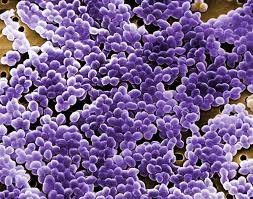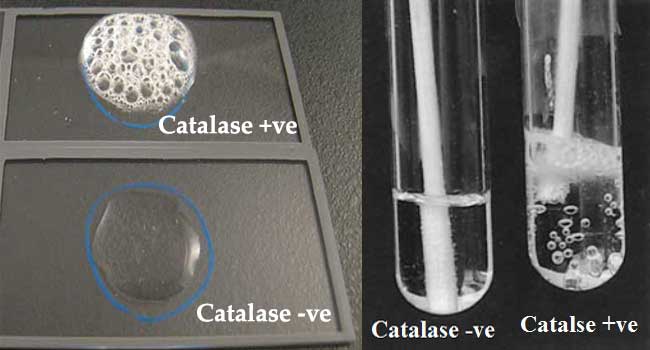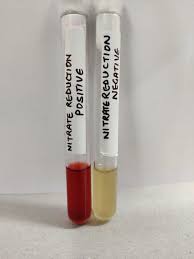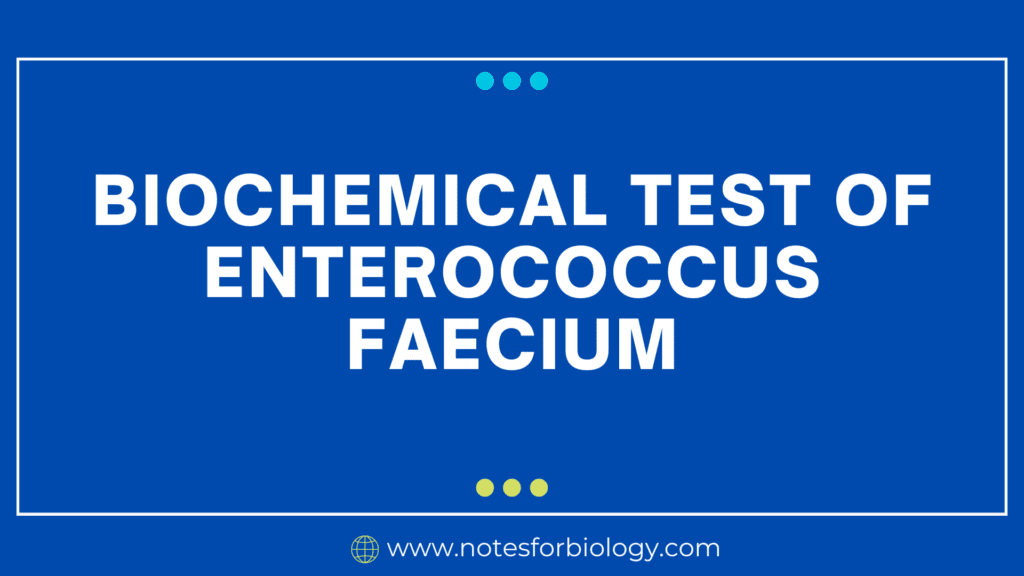What is Enterococcus faecium ?

One species of bacteria that is frequently discovered in both human and animal intestines is Enterococcus faecium. Although certain strains pose little threat, others have the potential to infect people, especially those who have recently been hospitalized or have compromised immune systems.
Healthcare practitioners should be concerned about E. faecium since it is growing more resistant to antibiotics. Wounds, bloodstream infections, and urinary tract infections can all be brought on by these resistant bacteria.
Table of Contents
Biochemical Test of Enterococcus faecium
Several biochemical techniques are used to precisely identify and distinguish E. faecium from other enterococcal species. These assays take advantage of E. faecium’s distinct metabolic properties, which facilitate accurate identification.
To detect E. faecium, the following biochemical assays are frequently used
Catalase Test

Concept: Identifies the existence of the catalase enzyme, which converts hydrogen peroxide into oxygen and water.
Method: An organism colony is given a drop of hydrogen peroxide.
Result : Because E. faecium is catalase-negative, no bubbles will occur as a result.
Test for Hydrolysis of Bile Esculin
Principle: Determines whether the organism can hydrolyze esculin when bile salts are present.
Method: The organism is injected into a medium that has bile salts and esculin in it.
Result : of producing esculetin, E. faecium exhibits positive bile esculin hydrolysis, as evidenced by the black precipitate it produces.
Testing for Pyrrolidonyl Arylamidase (PYR)
Basic idea: It finds the pyrrolidonyl arylamidase enzyme.
Method: An organism colony is given a reagent containing L-pyrrolidonyl-beta-naphthylamide.
Result :E. faecium is PYR-positive and changes to red in less than two minutes.
Test for 6.5% NaCl Tolerance
Fundamental: Ascertains the organism’s capacity to proliferate amid elevated salinity levels.
Procedure: A broth containing 6.5% sodium chloride is used to inoculate the organism.
Finding: E. faecium grows in the medium and can withstand 6.5% NaCl.
Serotyping Lancefield Group D
Principle : Determines the organism’s particular serotype by analysing its cell wall antigens.
Method: An organism culture is supplemented with a serum that contains antibodies that are specific to Lancefield Group D antigens.
Result : Lancefield Group D is usually where E. faecium is found.
Vitek® or API® system
Principle: These automated devices quickly detect microorganisms by running a panel of biochemical assays.
Method: Multiple substrates are pre-prepared on a strip into which organisms are injected.
Result: the system examines the patterns of colour changes that emerge and determines the identity of the organism by analysing its metabolic profile.
Additional Tests
Some further tests can be useful for further characterization or distinction, even though they are not commonly employed for the identification of E. faecium:
motility test :E. faecium fails the motility test.
Test for Nitrate Reduction: Nitrate can be reduced to nitrite by E. faecium.

Hemolysis Test: E. faecium typically exhibits gamma hemolysis, which means that blood agar plates do not show any hemolysis.
Laboratories can reliably identify and distinguish E. faecium from other enterococcal species by utilizing a combination of these biochemical tests, which facilitates proper clinical care and infection control measures.
Important Note: Although these tests are useful in identifying E. faecium, a combination of tests is necessary to ensure precise identification. Moreover, the importance of molecular techniques such as PCR is growing in the accurate identification and assessment of resistance genes.
Frequently Asked Questions(FAQ)
What is Enterococcus faecium ?
One species of bacteria that is frequently discovered in both human and animal intestines is Enterococcus faecium. Although certain strains pose little threat, others have the potential to infect people, especially those who have recently been hospitalized or have compromised immune systems.
Write the importance of the Biochemical Test?
The importance of Biochemical tests are useful in identifying E. faecium, a combination of tests is necessary to ensure precise identification. Moreover, the importance of molecular techniques such as PCR is growing in the accurate identification and assessment of resistance genes.
Related Articles

